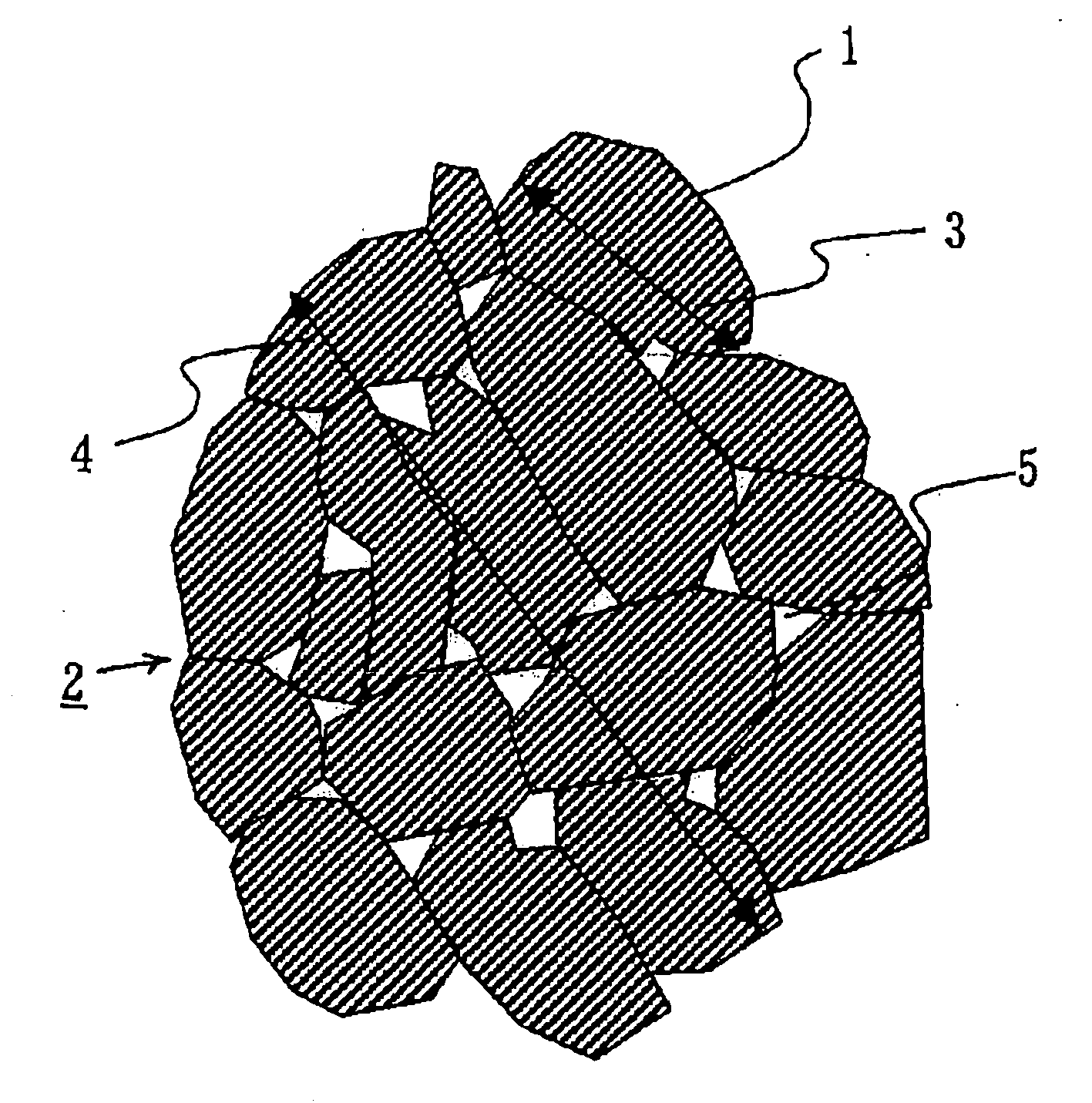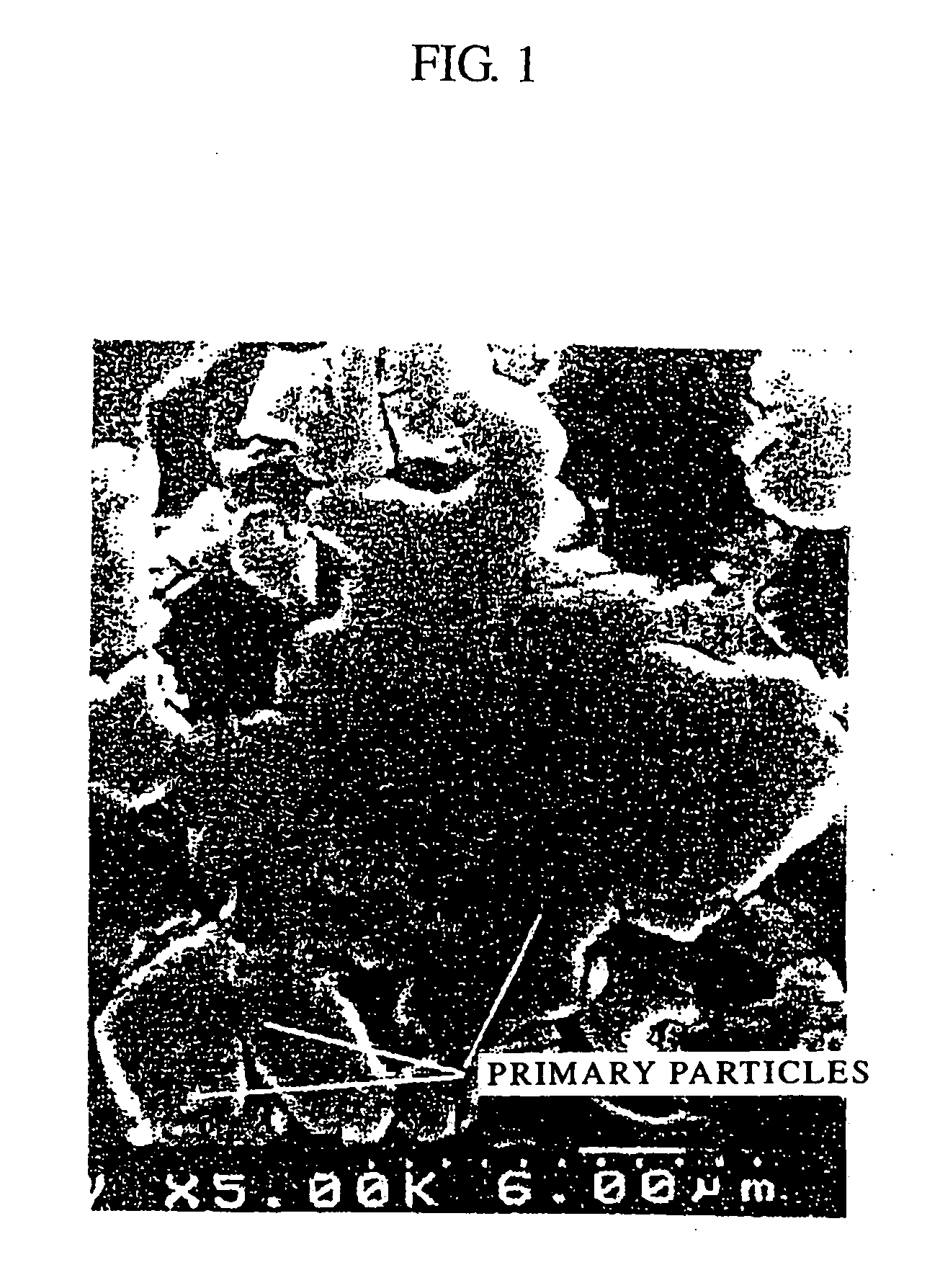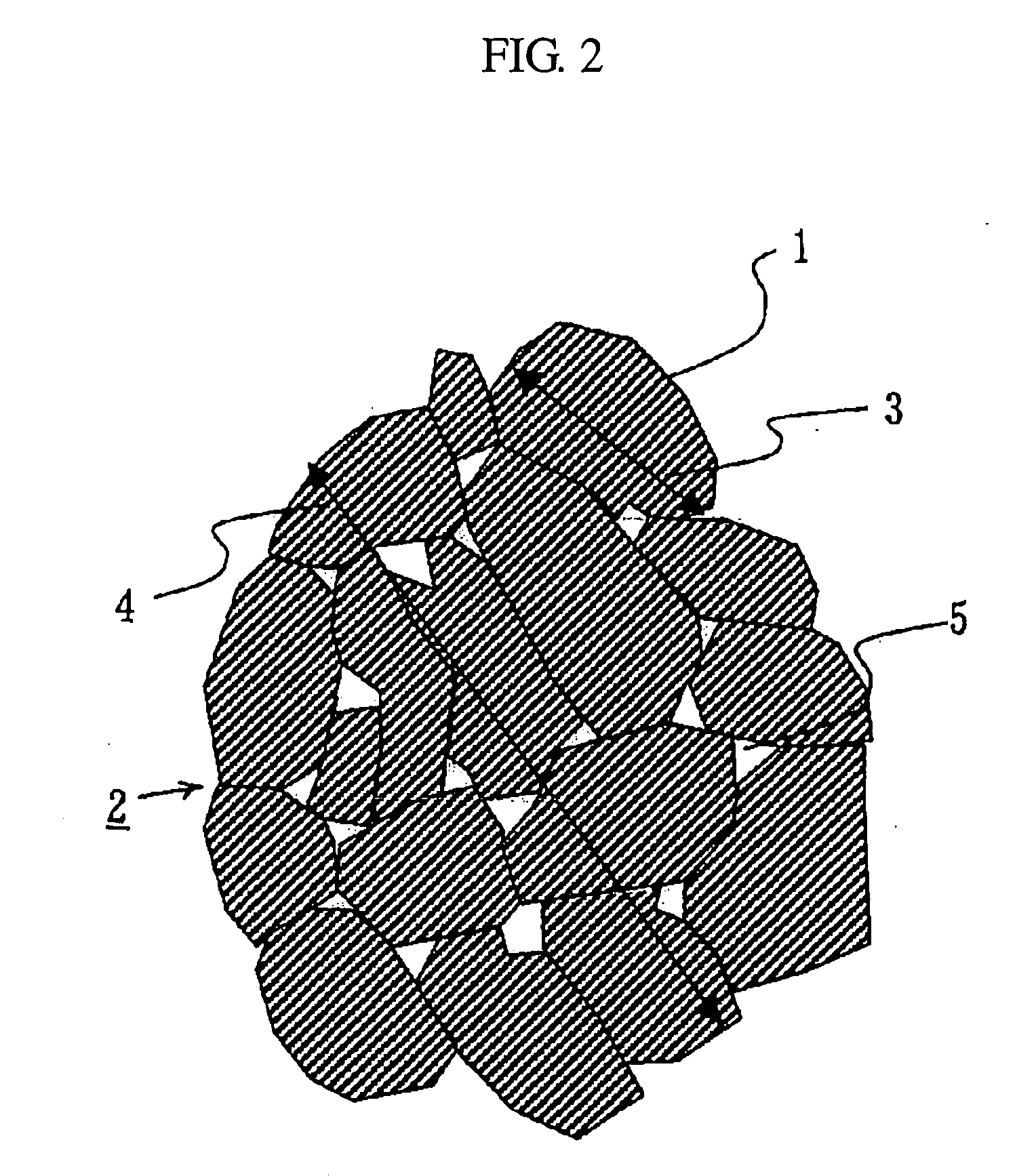Positive electrode material, its manufacturing method and lithium secondary battery
a positive electrode and secondary battery technology, applied in the direction of electrochemical generators, cell components, drinking vessels, etc., can solve the problems of extremely deteriorated ionic conductivity of electrolytic solution at low temperature, insufficient discharge rate characteristic at low temperature, and insufficient discharge rate characteristic of electric vehicles or hybrid electric vehicles, so as to enhance the ion conductivity of the whole secondary particl
- Summary
- Abstract
- Description
- Claims
- Application Information
AI Technical Summary
Benefits of technology
Problems solved by technology
Method used
Image
Examples
example 1
[0030] In this example, for material, manganese dioxide, cobalt oxide, nickel oxide and lithium carbonate are used, they are balanced in an atomic percentage so that the ratio of Ni, Mn and Co is 1:1:1 and the ratio of Li to (NiMnCo) is 1.02:1, demineralized water is added to them, and they are ground and mixed by a ball mill using a pot made of resin and a zirconia ball for 20 hours in a wet process. After polyvinyl alcohol (PVA) solution is added to mixed liquid by one mass percent in terms of solid content ratio, the mixed liquid is mixed further for one hour, is granulated and dried by a spray dryer and particles 5 to 100 μm in size are produced. Next, a crystal having layer structure is produced by burning these particles at 1000° C. for 3 to 10 hours, afterward, is ground and positive electrode material is acquired.
[0031]FIG. 1 shows a photograph (7,000 times) showing the section SEM of positive electrode material powder according to the invention. FIG. 2 is a schematic drawi...
example 2
[0041] Materials are mixed by the method of producing the positive electrode material having the crystal of layer structure described in example 1 so that the ratio of Li to NiMnCo is 1.1:1 and positive electrode material having a crystal of layer structure is produced. A sample for measurement is produced by cutting the substantial center of a secondary particle of the material by a focused ion beam or polishing after the secondary particle is buried in resin.
[0042] A method of measuring the orientation of a primary particle in the sectional structure of the secondary particle at this time is as follows. The sample for measurement is produced by cutting the substantial center of the secondary particle by a focused ion beam or polishing after the secondary particle is buried in resin. Next, the crystal orientation of the sample is acquired by electron backscatter diffraction (EBSD). This method is a method of analyzing a crystal orientation by analyzing Kikuchi line from back scatt...
PUM
| Property | Measurement | Unit |
|---|---|---|
| temperature | aaaaa | aaaaa |
| primary particle diameter | aaaaa | aaaaa |
| diameter | aaaaa | aaaaa |
Abstract
Description
Claims
Application Information
 Login to View More
Login to View More - R&D
- Intellectual Property
- Life Sciences
- Materials
- Tech Scout
- Unparalleled Data Quality
- Higher Quality Content
- 60% Fewer Hallucinations
Browse by: Latest US Patents, China's latest patents, Technical Efficacy Thesaurus, Application Domain, Technology Topic, Popular Technical Reports.
© 2025 PatSnap. All rights reserved.Legal|Privacy policy|Modern Slavery Act Transparency Statement|Sitemap|About US| Contact US: help@patsnap.com



